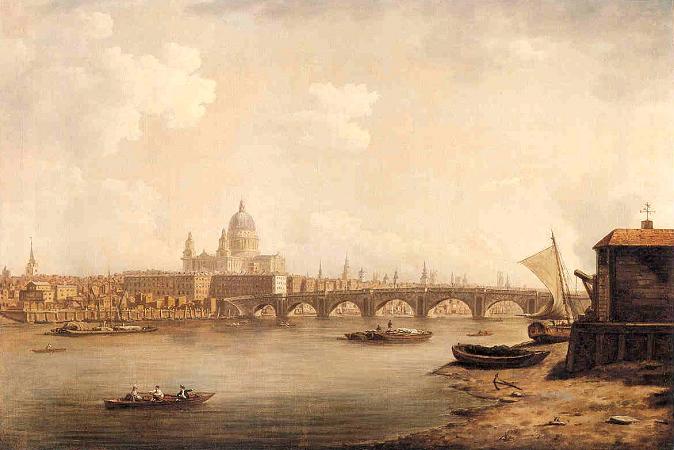Saint Paul's Cathedral. St Paul's Cathedral, London, is an Anglican cathedral, the seat of the Bishop of London and the mother church of the Diocese of London. It sits on Ludgate Hill at the highest point of the City of London and is a Grade I listed building. Its dedication to Paul the Apostle dates back to the original church on this site, founded in AD 604. The present cathedral, dating from the late 17th century, was designed in the English Baroque style by Sir Christopher Wren. Its construction, completed in Wren's lifetime, was part of a major rebuilding programme in the City after the Great Fire of London. The cathedral building largely destroyed in the Great Fire, now often referred to as Old St Paul's Cathedral, was a central focus for medieval and early modern London, including Paul's walk and St. Paul's Churchyard being the site of St. Paul's Cross. The cathedral is one of the most famous and most recognisable sights of London. Its dome, framed by the spires of Wren's City churches, has dominated the skyline for over 300 years. At 365 feet high, it was the tallest building in London from 1710 to 1967. The dome is among the highest in the world. St Paul's is the second-largest church building in area in the United Kingdom after Liverpool Cathedral. Services held at St Paul's have included the funerals of Admiral Nelson, the Duke of Wellington, Sir Winston Churchill and Margaret Thatcher; jubilee celebrations for Queen Victoria; peace services marking the end of the First and Second World Wars; the wedding of Prince Charles and Lady Diana Spencer; the launch of the Festival of Britain; and the thanksgiving services for the Silver, Golden and Diamond Jubilees and the 80th and 90th birthdays of Queen Elizabeth II. St Paul's Cathedral is the central subject of much promotional material, as well as of images of the dome surrounded by the smoke and fire of the Blitz. The cathedral is a working church with hourly prayer and daily services. The tourist entry fee at the door is E20 for adults, but no charge is made to worshippers. A list of the 16 archbishops of London was recorded by Jocelyn of Furness in the 12th century, claiming London's Christian community was founded in the 2nd century under the legendary King Lucius and his missionary saints Fagan, Deruvian, Elvanus and Medwin. None of that is considered credible by modern historians but, although the surviving text is problematic, either Bishop Restitutus or Adelphius at the 314 Council of Arles seems to have come from Londinium. The location of Londinium's original cathedral is unknown. Bede records that in AD604 Augustine of Canterbury consecrated Mellitus as the first bishop to the Anglo-Saxon kingdom of the East Saxons and their king, Saeberht. Saeberht's uncle and overlord, Aethelberht, king of Kent, built a church dedicated to St Paul in London, as the seat of the new bishop. It is assumed, although not proved, that this first Anglo-Saxon cathedral stood on the same site as the later medieval and the present cathedrals. On the death of Saeberht in about 616, his pagan sons expelled Mellitus from London, and the East Saxons reverted to paganism. The fate of the first cathedral building is unknown. Christianity was restored among the East Saxons in the late 7th century and it is presumed that either the Anglo-Saxon cathedral was restored or a new building erected as the seat of bishops such as Cedd, Wine and Earconwald, the last of whom was buried in the cathedral in 693. This building, or a successor, was destroyed by fire in 962, but rebuilt in the same year. King Aethelred the Unready was buried in the cathedral on his death in 1016; the tomb is now lost. The cathedral was burnt, with much of the city, in a fire in 1087, as recorded in the Anglo-Saxon Chronicle. The present structure of St Peter upon Cornhill was designed by Christopher Wren following the Great Fire of London in 1666. It stands upon the highest point in the area of old Londinium, and medieval legends tie it to the city's earliest Christian community. In 1995, however, a large and ornate 5th-century building on Tower Hill was excavated, which might have been the city's cathedral. The Elizabethan antiquarian William Camden argued that a temple to the goddess Diana had stood during Roman times on the site occupied by the medieval St Paul's Cathedral.
more...













